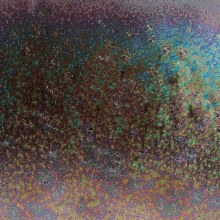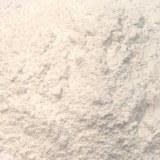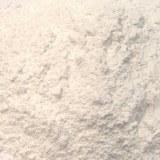
Dolomite, (Limestone) (50# Bag)
| Qty: | Unit Price per LB: |
|---|---|
| 5 | $0.86 |
| 10 | $0.77 |
| 50 | $0.57 |
| 100 | $0.48 |
Item#: 1531
MPN: MDOLOCRON
Alternate Names: Calcium Magnesium Carbonate, Raw Limestone
- Full bag is 50 lbs
- Dolomite as a ceramic material is a uniform calcium magnesium carbonate.
- In ceramic glazes, it is used as a source of magnesia and calcia.
Dolomite as a ceramic material is a uniform calcium magnesium carbonate. In ceramic glazes, it is used as a source of magnesia and calcia. Other than talc, dolomite is the principal source of MgO in high-temperature raw glazes. 'Dolomite matte' stoneware glazes, for example, are highly prized for their pleasant 'silky' surface texture. Dolomite by itself is refractory, but when combined with the typical oxides in a glaze (especially boron) it readily enters the melt.
Commercial dolomites are not able to achieve the theoretical 54:46 calcium carbonate:magnesium carbonate ratio, they tend to have less magnesia. It is simple to do an LOI test by firing a specimen of powder in a thin bisqued bowl to confirm the consistency of dolomite shipments. The chemistry shown here is theoretical and many commercial materials approach this with much less than 1% of two or three other oxides (e.g. Al2O3, SiO2).
Dolomite is a carbonate (like whiting) in that it loses considerable weight during firing when it disassociates to form MgO, CaO and CO2, this process being complete by about 900C. That being said, dolomite gases out before talc does so for boron glazes that begin melting early, sourcing MgO from dolomite will produce a smoother and more defect-free surface (because of the comparative absence of tiny bubbles in the glass matrix).
In many circumstances where a raw glaze employs both CaO and MgO, dolomite is an economic alternative to sourcing with a mix of calcium carbonate and talc. However, care needs to be taken to obtain a consistent grade since dolomites tend to vary more in mineralogy and can contain iron contamination that can darken the fired glaze. Although calcium carbonate and dolomite are plentiful minerals and grinding plants are located throughout North America, finding a suitable ceramic-grade dolomite that will be consistent and available long term is not as easy as it might seem.
Synthetic substitutes to source MgO and CaO (e.g. frits) are worth considering, especially if glazes are not high temperature. Frits have no loss on ignition (therefore do not generate glaze bubbles) and melt far earlier than mineral sources of MgO and CaO. Using glaze chemistry it is quite easy to adjust a recipe to source MgO from a frit instead of raw materials.



Share:
Share on Facebook Share on Twitter Share on Pinterest Tell a friend